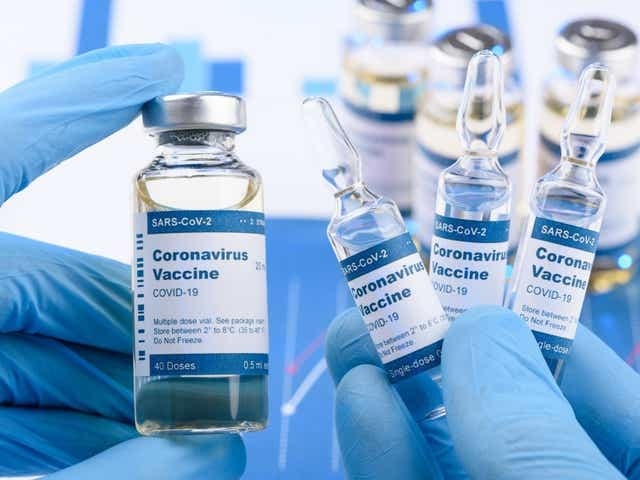One of the many unknowns about SARS-CoV-2 is how we might become immune to it. When you get infected with viruses, your immune system fights back by producing proteins called antibodies. These stick around for the long haul, and your body is prepared to churn out more of them if you encounter the pathogen again. Viruses vary widely in terms of the immune response they elicit.
While vaccine development can take years, researchers are not starting from scratch to develop a COVID-19 vaccine. Past research on SARS and MERS vaccines has identified potential approaches.
There are at least eight vaccine types being tried against coronavirus, and they rely on different viruses or viral parts.
- Live attenuated (Virus)
- Inactivated (Virus)
- Virus like particles (VLP)
- Protein subunit-based vaccines
- Replicating (Viral vector)
- Non-replicating (Viral vector)
- RNA (Nucleic acid)
- DNA (Nucleic acid)
Among those with the greatest potential for speed are DNA- and RNA-based platforms, followed by those for developing recombinant-subunit vaccines. RNA and DNA vaccines can be made quickly because they require no culture or fermentation, instead using synthetic processes.
What types of vaccines exist?
Live attenuated
Live, attenuated vaccines weaken the living viruses in the vaccine so they cannot cause disease in people. This is done by growing several generations of the virus in animal or human cells until it picks up mutations, so that it evolves away from causing disease in humans. Then it is a matter of selecting the mutant strains that can replicate in human cells but do not cause disease like their wild ancestor. However, live attenuated vaccines are not for people who have weakened immune systems. (e.g.: measles, mumps, rubella, chickenpox, and tuberculosis)
The NY–based biotech firm Codagenix in collaboration with the Serum Institute of India is the only company developing a live, attenuated COVID-19 vaccine which instead of using blunt forces like heat or chemicals to kill the virus, uses a “deoptimization” strategy to manipulate the virus into a version that can still replicate but won’t cause disease.
Inactivated vaccines
Inactivated vaccine is made from a dead version of the whole virus or bacteria after it has been killed with heat or chemicals. Inactivated vaccines may not provide protection that is as strong as that produced by live vaccines. This type of vaccine often requires multiple doses, followed by booster doses, to provide long-term immunity. Examples of inactivated vaccines: hepatitis A, influenza (shot only), polio (shot only) and rabies.
Virus like particles (VLP vaccines)
They are protein based. This type of vaccine can also be made using smaller pieces of the microbe, which by themselves are not considered alive because they lack genetic material but can trigger a strong immune response but cannot cause the disease itself.
Protein Subunit vaccines (protein based)
Subunits are a textbook vaccine strategy, in which pathogen-derived antigenic fragments (most commonly proteins) are used to stimulate an immune response. For SARS-CoV-2,
spike glycoprotein is the subunit of choice. Because these vaccines contain only the essential antigens and not all the other molecules that make up the germ, they cannot cause illness. (e.g. whopping cough vaccine)
Sanofi Pasteur and Novavax are currently using this vaccine development strategy.
Replicating Viral Vector
Viral- vector vaccine that replicates within cells. Example is the newly approved Ebola vaccine.
Recombinant vector vaccines are live replicating viruses that are engineered to carry extra genes derived from a pathogen—and these extra genes produce proteins against which we want to generate immunity.
AstraZeneca’s vaccine (AZD1222), is a recombinant viral vector vaccine. The company plans to begin its first shipments in September for the UK. AstraZeneca is in discussions with the Serum Institute of India and other potential partners to increase production and distribution.
Non-replicating (Viral vector)
Currently no vaccine is made using this method. Booster shots are needed to get long lasting immunity. J&J is currently working on this approach.
RNA and/DNA (Nucleic-acid) Vaccines
This type of vaccine uses genetically engineered RNA or DNA that has instructions for making copies of the S protein. These copies prompt an immune response to the virus. With this approach, no infectious virus needs to be handled.
Idea is to use genetic instructions (in the form of DNA or RNA) for a coronavirus protein that prompts an immune response. The nucleic acid is inserted into human cells, which then churn out copies of the virus protein. Most of these vaccines encode the virus’s spike protein. Moderna’s mRNA-1273 vaccine currently appears to be a leading candidate. Pfizer’s BNT162 is also a vaccine candidate based upon mRNA. Inovio’s (INO-4800) is using DNA and has shown robust neutralizing antibody and T- cell immune Responses.
“No single vaccine or vaccine platform alone is likely to meet the global need, and so a strategic approach to the multi-pronged endeavor is absolutely critical,” according to Anthony Fauci, M.D., NIAID director.
At least 15+ research teams are working on an approach for an effective COVID-19 vaccine.
Sources: Nature analysis based on: WHO COVID-19 Vaccine Landscape/Milken Institute COVID-19 Treatment and Vaccine Tracker/T. Thanh Le et al. Nature Rev. Drug. Disc. http://doi.org/ggrnbr (2020)/F

About Vispi Kanga
Vispi Kanga was the principal scientist in global technology at Unilever and has more than 35 years experience in product development in dermatology and skin care formulations, working for multi-national companies in health and personal care industry. He has followed the evolution of the Health & Personal Care industry since the 70’s to it’s current stature as a $146 billion business in the United States.
His expertise has resulted in several patents in the development of new innovative products. He received his BS in Pharmacy from Ahmedabad India and did his postgraduation from Arnold & Marie Schwartz College of Pharmacy & Health Sciences (formerly known as Brooklyn College of Pharmacy).
Vispi has given numerous presentations in the area of skin care delivery systems and use of natural ingredients to the Personal Care Ingredients & Technology division of Health & Beauty America as well as other scientific organizations including Panacea, natural products expo India. He was the contributing editor of HAPPI magazine and also contributed articles and editorials in SpecialChem-The material selection platform. He was also an adjunct professor in the Graduate School of Natural Sciences at Fairleigh Dickinson University.
You can find all articles by Vispi Kanga on Parsi Khabar at this link: Vispi Speaks

